The earthquake struck Pisco on August 15, 2007. It left behind broken buildings, broken people, a broken town. Piles and piles of rubble line the streets and beach front. The Cathedral´s roof still shows the scars, it was holding Mass when the quake hit, inside 100 people died that day. Around 80% of the city was destroyed and not much has been rebuilt by the look of things. When we arrived it was the first time our tour leader told us not to go out on our own and certainly not at night, the place has turned very dangerous as places so often do after major disasters. The locals claim the quake was an 8.2 in magnitude but the government says it was only 7.8, apparently if it was 8+ the government would have had to rebuild the city but as they claim it was less they seem to have left it to make do. Very sad.
The journey from Nazca was through a vast desert with the odd cactus that turned into palm trees as we neared the coast
. On the way we went to La Huacachina, which has an oasis and is found near the town of Ica so we could do some sandboarding on the surrounding sand dunes. We took a sand buggie ride across the dunes, bouncing around the vast and often very steep sand walls, it was good fun. We also stopped to do some sand boarding down 50 to 100m slopes. We body boarded our way down them, to me it seemed faster watching people going down than when you actually did it yourself. It was a fun couple of hours.
Another stop was at a winerie to see how the famous Pisco drinks are made, which is still largely the same as it was in the 1500s, very basic but effective. The stuff is potent, in its purest form it is between 43 and 49% av. Of course, we had the obligatory taste tests of all the different types, from Pisco as a dessert wine, at 13% av, to its pure form and all in between. We had to make sure we understood all the subtle differences of course. Numerous Pisco Sour ######### were consumed that evening
.
The next day in Pisco we took a tour out to Islas Ballestas, the 'poor man's' Galapegos Islands. It is actually a group of three islands caked in bird pooh or Guano, which is the Quenchua word for bird droppings. Apparently there is as much as 2 to 3 metres deep in parts and is the most expensive fertiliser in the world, people come out to the islands to dig it up and sell it. It has a very pungeant smell that takes some getting used to if at all while you tour round them on the boat. The islands are full of thousands of birds, such as pelicans cormorants, boobies and seagulls, and hundreds of sealions and penguins. It was 35 soles, not bad for a couple of hours to see such spectacular wildlife in their own habitat. After the tour we upped sticks again and headed to Lima to end our full crossing of the continent.
Pisco Sour
Wednesday, December 17, 2008
 Pisco, Peru
Pisco, Peru
Other Entries
-
6Start of the Southern Cross journey
Nov 0542 days prior Rio de Janeiro, Brazilphoto_camera0videocam 0comment 1
Rio de Janeiro, Brazilphoto_camera0videocam 0comment 1 -
7Ilha Grande
Nov 0641 days prior Ilha Grande, Brazilphoto_camera10videocam 0comment 3
Ilha Grande, Brazilphoto_camera10videocam 0comment 3 -
8The charm of Paraty
Nov 0839 days prior Paraty, Brazilphoto_camera11videocam 0comment 1
Paraty, Brazilphoto_camera11videocam 0comment 1 -
9The power of Iguassu Falls - Foz do Iguacu
Nov 1235 days prior Foz do Iguacu, Brazilphoto_camera12videocam 0comment 1
Foz do Iguacu, Brazilphoto_camera12videocam 0comment 1 -
10Snorkeling in Bonito
Nov 1433 days prior Bonito, Brazilphoto_camera1videocam 0comment 0
Bonito, Brazilphoto_camera1videocam 0comment 0 -
11Pantanal, Piranha and Pests
Nov 1631 days prior Pantanal, Brazilphoto_camera15videocam 0comment 2
Pantanal, Brazilphoto_camera15videocam 0comment 2 -
12Bolivia - Quijarro, the Death Train and Santa Cruz
Nov 2027 days prior Santa Cruz, Boliviaphoto_camera2videocam 0comment 2
Santa Cruz, Boliviaphoto_camera2videocam 0comment 2 -
13Sucre - The White City
Nov 2126 days prior Sucre, Boliviaphoto_camera3videocam 0comment 1
Sucre, Boliviaphoto_camera3videocam 0comment 1 -
14The road to Potosi
Nov 2225 days prior Potosi, Boliviaphoto_camera9videocam 0comment 3
Potosi, Boliviaphoto_camera9videocam 0comment 3 -
15Uynui and the salt plains
Nov 2423 days prior Uyuni, Boliviaphoto_camera20videocam 0comment 0
Uyuni, Boliviaphoto_camera20videocam 0comment 0 -
16La Paz and the "Death Road"
Nov 2819 days prior La Paz, Boliviaphoto_camera5videocam 0comment 3
La Paz, Boliviaphoto_camera5videocam 0comment 3 -
17Puno and Lake Titicaca
Nov 3017 days prior Puno, Peruphoto_camera10videocam 0comment 1
Puno, Peruphoto_camera10videocam 0comment 1 -
18No change for notes....ever!
Dec 0314 days prior Cusco, Peruphoto_camera0videocam 0comment 0
Cusco, Peruphoto_camera0videocam 0comment 0 -
19The Inca Capital - Cusco
Dec 0413 days prior Cusco, Peruphoto_camera10videocam 0comment 1
Cusco, Peruphoto_camera10videocam 0comment 1 -
20Machu Picchu
Dec 107 days prior Aguas Calientes, Peruphoto_camera12videocam 0comment 0
Aguas Calientes, Peruphoto_camera12videocam 0comment 0 -
21Arequipa and the Colca Canyon
Dec 143 days prior Arequipa, Peruphoto_camera9videocam 0comment 0
Arequipa, Peruphoto_camera9videocam 0comment 0 -
22Nazca
Dec 152 days prior Nasca, Peruphoto_camera6videocam 0comment 0
Nasca, Peruphoto_camera6videocam 0comment 0 -
23Pisco Sour
Dec 17 Pisco, Peruphoto_camera6videocam 0comment 0
Pisco, Peruphoto_camera6videocam 0comment 0 -
24Lima, 'City of the Kings'
Dec 214 days later Lima, Peruphoto_camera10videocam 0comment 1
Lima, Peruphoto_camera10videocam 0comment 1 -
25Colombia Landing - Bogota
Dec 247 days later Bogota, Colombiaphoto_camera5videocam 0comment 0
Bogota, Colombiaphoto_camera5videocam 0comment 0 -
26Cartagena - fairytale city of romance and legend
Jan 0115 days later Cartagena, Colombiaphoto_camera20videocam 0comment 0
Cartagena, Colombiaphoto_camera20videocam 0comment 0 -
27Santa Marta and Taganga
Jan 0317 days later Santa Marta, Colombiaphoto_camera0videocam 0comment 0
Santa Marta, Colombiaphoto_camera0videocam 0comment 0 -
28Stuck in Maracaibo
Jan 0418 days later Maracaibo, Venezuelaphoto_camera0videocam 0comment 0
Maracaibo, Venezuelaphoto_camera0videocam 0comment 0 -
29Merida - South America's adventure capital
Jan 0721 days later Merida, Venezuelaphoto_camera7videocam 0comment 0
Merida, Venezuelaphoto_camera7videocam 0comment 0 -
30Caracas
Jan 0923 days later Caracas, Venezuelaphoto_camera5videocam 0comment 4
Caracas, Venezuelaphoto_camera5videocam 0comment 4 -
31Into the wild - Canaima and Angel Falls
Jan 1226 days later Canaima National Park, Venezuelaphoto_camera13videocam 0comment 0
Canaima National Park, Venezuelaphoto_camera13videocam 0comment 0 -
32Buenos Aires - Tango Central
Jan 1529 days later Buenos Aires, Argentinaphoto_camera0videocam 0comment 0
Buenos Aires, Argentinaphoto_camera0videocam 0comment 0 -
33Mendoza - In the wine country
Jan 1933 days later Mendoza, Argentinaphoto_camera0videocam 0comment 2
Mendoza, Argentinaphoto_camera0videocam 0comment 2 -
34Vaparaiso - home of Bohemia
Jan 2236 days later Valparaiso, Chilephoto_camera0videocam 0comment 0
Valparaiso, Chilephoto_camera0videocam 0comment 0 -
35Santiago - saying goodbye to South America
Jan 2438 days later Santiago, Chilephoto_camera0videocam 0comment 0
Santiago, Chilephoto_camera0videocam 0comment 0 -
36Notes on South America
Jan 2438 days later Santiago, Chilephoto_camera0videocam 0comment 1
Santiago, Chilephoto_camera0videocam 0comment 1 -
37Soaking up the sun and rain in Sydney
Jan 2943 days later Sydney, Australiaphoto_camera0videocam 0comment 0
Sydney, Australiaphoto_camera0videocam 0comment 0 -
38Tasmania Times
Feb 0651 days later Hobart, Australiaphoto_camera0videocam 0comment 0
Hobart, Australiaphoto_camera0videocam 0comment 0 -
39Melbourne Madness and Sadness
Feb 1156 days later Melbourne, Australiaphoto_camera0videocam 0comment 0
Melbourne, Australiaphoto_camera0videocam 0comment 0 -
40Great Ocean Road, Grampians and Adelaide
Feb 1661 days later Adelaide, Australiaphoto_camera0videocam 0comment 1
Adelaide, Australiaphoto_camera0videocam 0comment 1 -
41The monster 4,000km road trip to Perth
Feb 2469 days later Nullarbor, Australiaphoto_camera0videocam 0comment 0
Nullarbor, Australiaphoto_camera0videocam 0comment 0

 Pisco, Peru
Pisco, Peru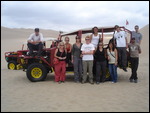
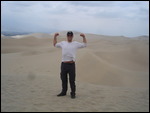








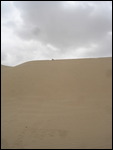
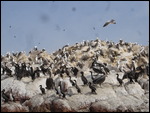
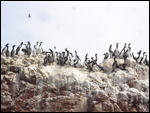
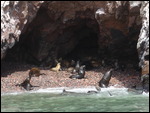
2025-05-22